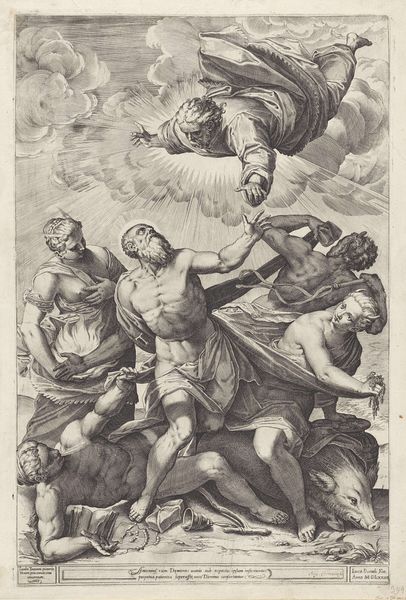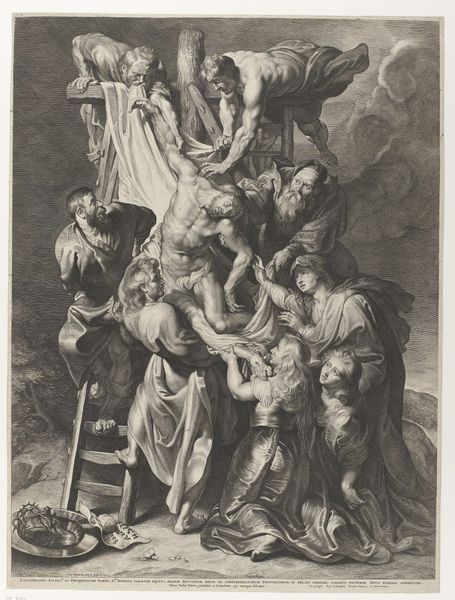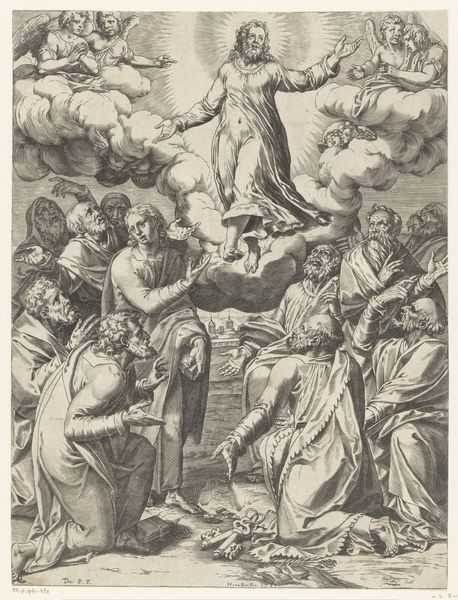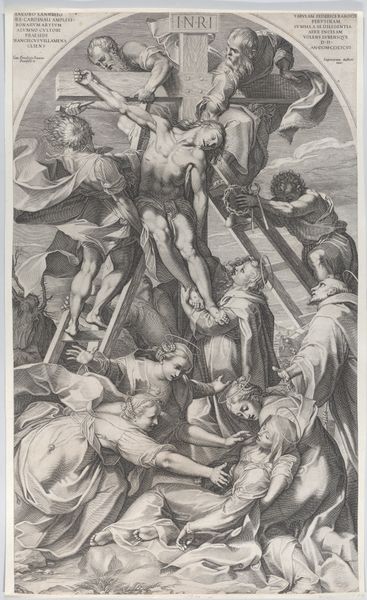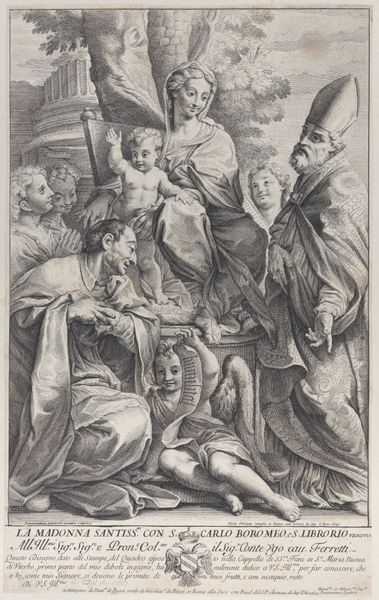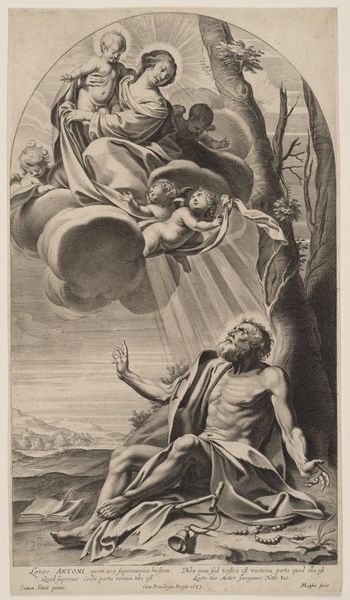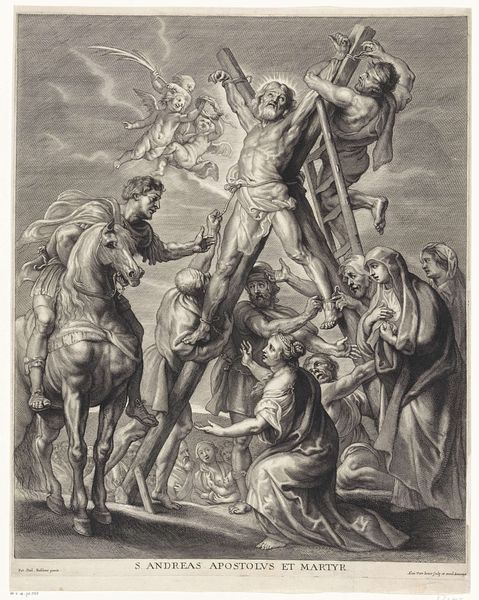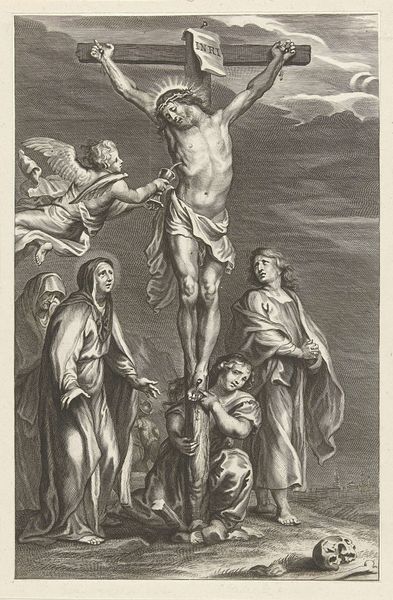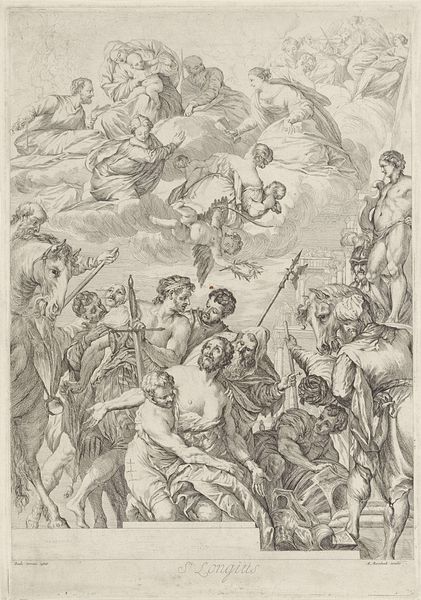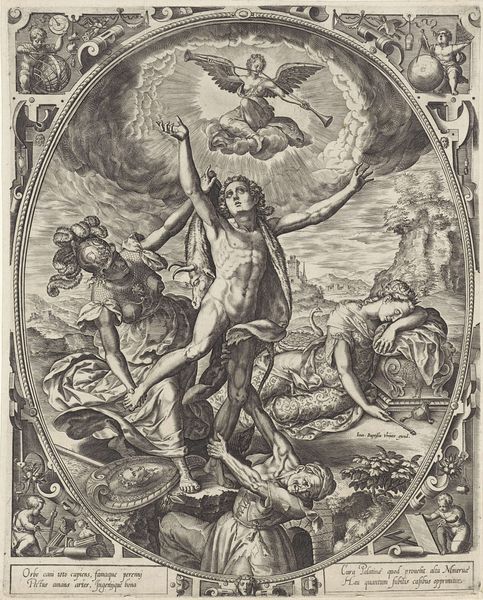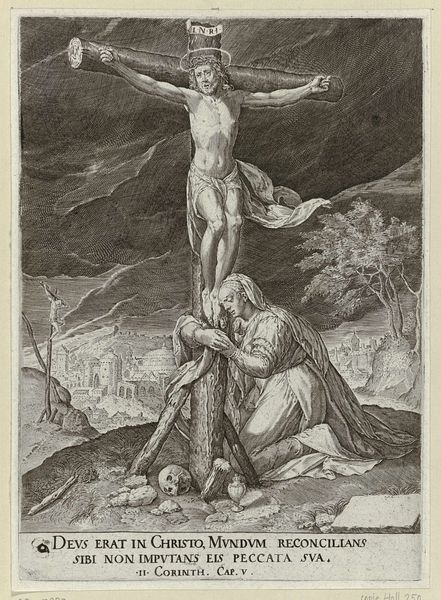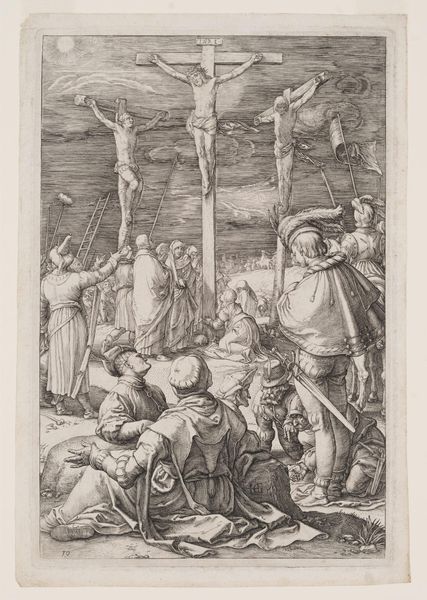
print, engraving
# print
#
mannerism
#
figuration
#
history-painting
#
engraving
Dimensions: height 341 mm, width 230 mm
Copyright: Rijks Museum: Open Domain
Curator: Look at the sheer emotional weight in this engraving! Battista Angolo del Moro’s "Bewening van Christus," created in 1572, captures the moment of Christ's deposition from the cross with stark intensity. The Rijksmuseum is fortunate to house such a moving work. Editor: Moving, yes, but it strikes me first by the dynamic, almost theatrical, arrangement of the figures around the central vertical axis of the cross. The light and shadow, even within the confines of the engraving technique, give it a pronounced dramatic quality. Curator: Absolutely. And consider the historical context. The Mannerist style, so evident here, emerged from a period of immense religious and social upheaval. Works like this acted as potent visual narratives, reinforcing faith amidst challenges to the established order. Editor: Observe how del Moro uses the formal devices of Mannerism — elongated figures, the dense composition, and the complex arrangement of limbs — to amplify that emotional intensity. There’s a deliberate distortion of reality serving the expressive purpose. Curator: Precisely. It’s crucial to acknowledge that del Moro and his contemporaries weren’t merely illustrating a biblical scene; they were responding to anxieties about power and salvation that resonate through the ages. These aren’t just religious figures; they represent universal archetypes of suffering, loss, and resistance. How can we consider their positionality relative to patriarchal power? Editor: You read into my mind! In this particular piece the interplay between horizontal and vertical lines create tension and rhythm in this somber scene. The cross creates the stage, right, for an intense visual impact; it shows anguish with artistic sophistication. The characters surround it, their eyes fixated on a single point. It all converges! Curator: That convergence becomes all the more poignant when we remember who gets omitted from this kind of narrative and art style—those whose voices and lived experiences would contribute another whole layer. The visual representation is potent but let's look at those absent faces. Editor: I agree on that visual impact indeed...It has been revealing analyzing Del Moro’s creation.
Comments
No comments
Be the first to comment and join the conversation on the ultimate creative platform.
